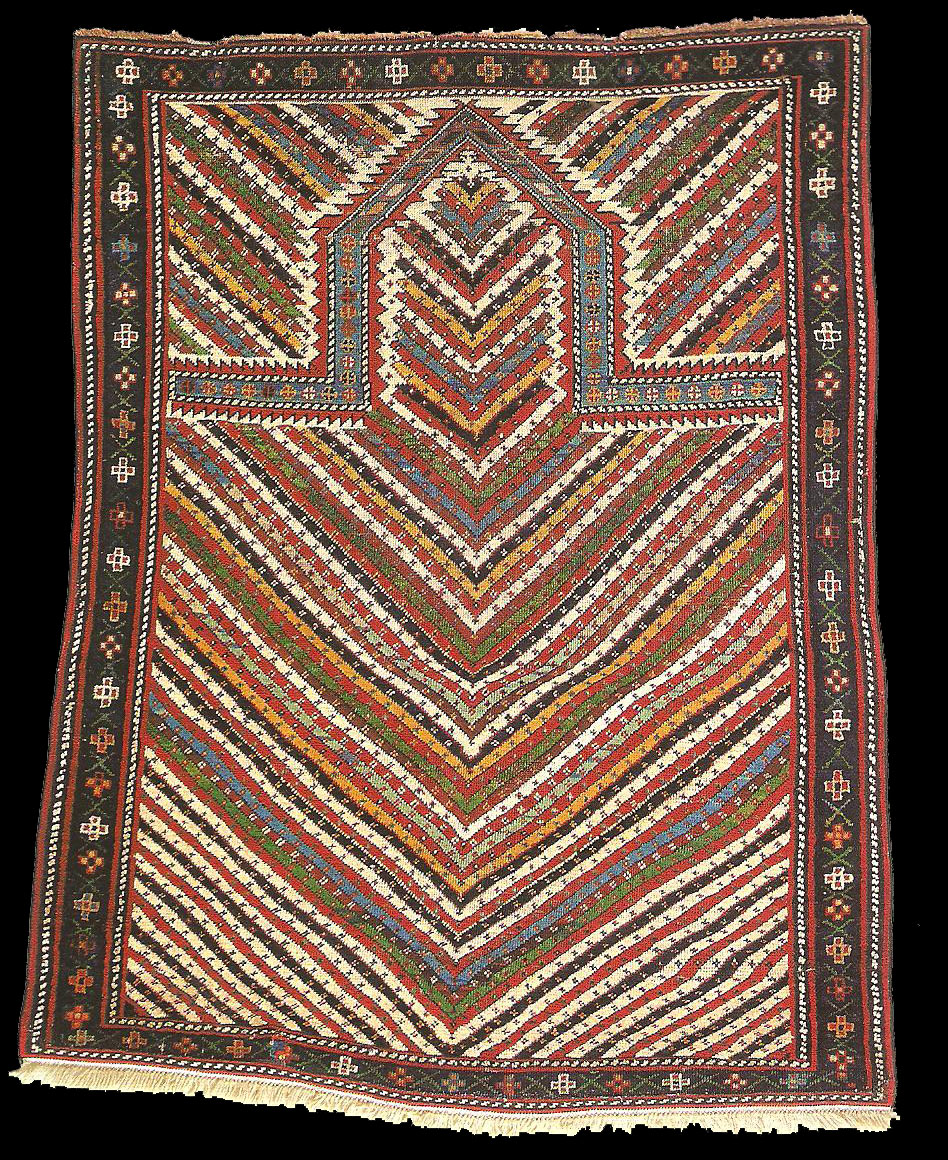|
This rare prayer rug was purchased by its present owners in the 1980s from a
small antique shop in New England - fostering renewed hope that great pieces
may yet be found in unconventional venues (although the days of star Kazaks
being discovered at flea markets by torchlight in the early morning hours
have receded into myth). The chevron pattern is very unusual, and the vivid
colours in the rug combine to create an effect of mobility and cheeriness.
The V -shaped 'base' of the field uses only three colours (red, dark blue
and ivory); in concert with the polychrome field this creates an effect of
depth and the illusion of a third dimension.
Although multicoloured striated patterns are common in Caucasian rugs, the
most common arrangement is diagonals, followed by verticals - a
configuration usually found on Karabaghs (see plate 34 for further comments
on striped prayer rugs). Narrow stripes are generally used in east Caucasian
rugs, with broader stripes being more typical of south Caucasia. A Genje
prayer rug with an unusual zigzag arrangement of stripes is also known. This
example was published as plate 23 in the catalogue of the New Boston Rug
Society's exhibition, Through the Collector's Eye, 1991-92. Mark Hopkins, in
the catalogue caption, identifies a Kazak with a similar configuration.
published Ralph Kaffel's Caucasian Prayer Rugs, plate 40
 |

